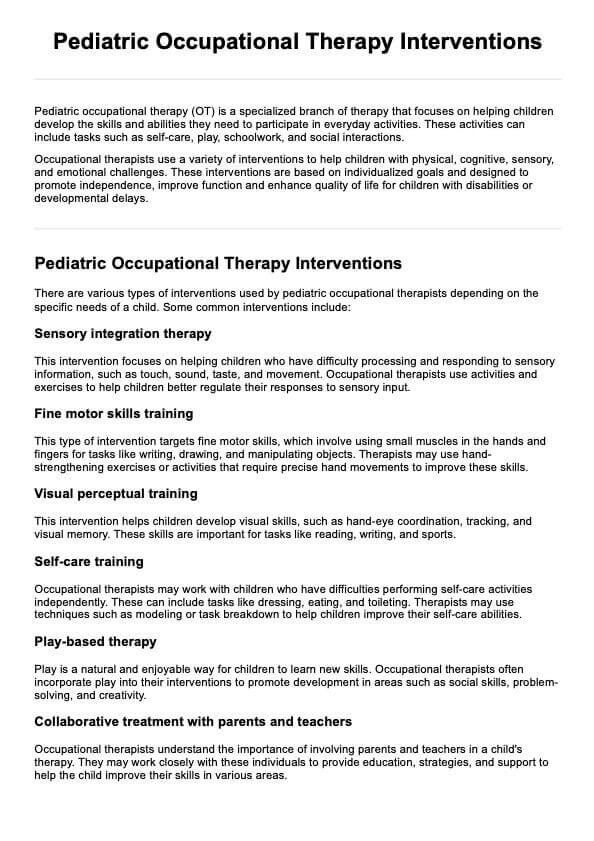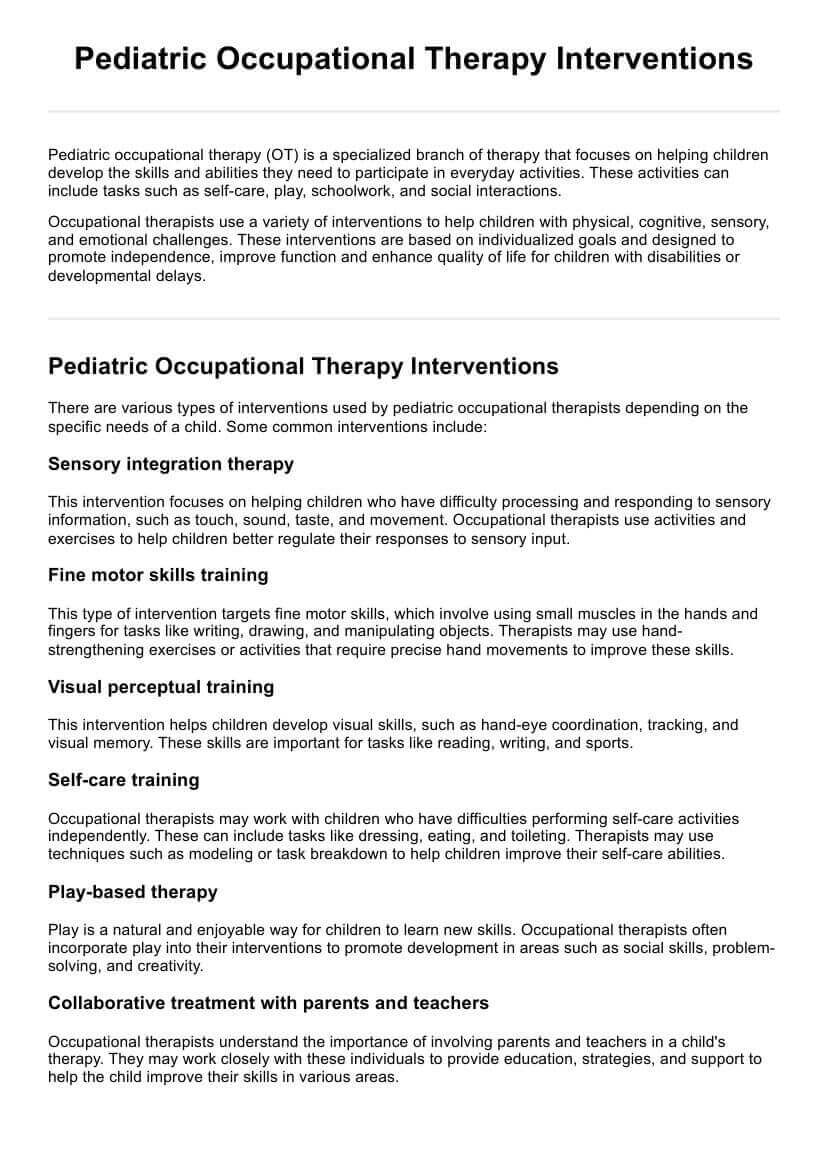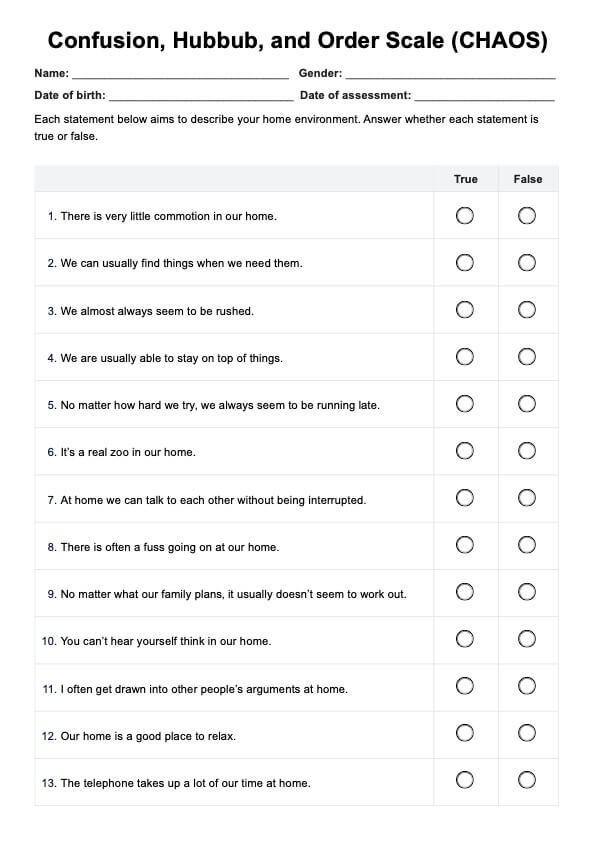Pediatric Occupational Therapy Interventions
Discover effective Pediatric Occupational Therapy Interventions that support child development and enhance your child's daily life and functioning. Download our free example and guide today.


What is pediatric occupational therapy?
Pediatric occupational therapy (OT) provides crucial support to enhance a child's ability to perform daily activities independently. This therapy focuses on developing the necessary skills for tasks like dressing, feeding, and academic activities, which is especially beneficial for children with developmental delays or disabilities.
The primary objective of pediatric OT is to foster a child's independence by enhancing their motor skills, sensory processing abilities, and overall task execution. Therapists work to integrate meaningful activities into the therapy that mimic real-life challenges, supporting the child's ability to navigate their environment effectively.
Children with a wide range of needs can benefit from pediatric OT, including those with:
- Developmental disorders such as autism spectrum disorder (ASD) or attention deficit hyperactivity disorder (ADHD).
- Physical disabilities that affect movement or coordination.
- Sensory integration issues, where a child has difficulty processing sensory information.
A child may need occupational therapy if they exhibit difficulties with typical age-appropriate tasks, struggle with school performance due to poor motor skills, or show behavioral challenges stemming from sensory integration issues. Assessment typically involves observation, parent and teacher reports, and standardized testing to determine the child's needs and best action.
Pediatric Occupational Therapy Interventions Template
Pediatric Occupational Therapy Interventions Example
What are common pediatric occupational therapy interventions?
Pediatric occupational therapy offers various interventions tailored to meet the specific developmental needs of children. Here are some widely used interventions:
Sensory integration therapy
This therapy is designed to help children with sensory processing issues. It aims to improve how they process and respond to sensory stimuli in their environment, which is crucial for children who might be overwhelmed by textures, sounds, or visual inputs.
Developmental coordination activities
These activities are essential for children who need to enhance their fine motor skills and hand-eye coordination. Common practices include threading beads, cutting with scissors, and other hand manipulation tasks that refine precision, visual motor skills, and coordination.
Visual motor integration
This intervention supports the development of coordination between visual perception skills and physical movement. Effective exercises include drawing, tracing, or completing puzzles, which help children translate what they see into coordinated motor responses.
Play-based therapy
Utilizing play as a therapeutic approach helps improve motor skills, enhance social interactions, and boost cognitive development. This form of therapy engages children and effectively works towards developmental goals through natural, playful interactions with the natural environment.
Daily living skills training
Focused on promoting independence, this training teaches children essential self-care skills such as dressing, feeding, and personal grooming. These activities are structured to encourage self-reliance and participation in daily routines.
Commonly asked questions
The goal is to improve a child's ability to perform daily life tasks and enhance their motor, sensory, and social skills for better overall development and independence.
The frequency of sessions depends on the child's specific needs and goals, which can be discussed and determined with a qualified pediatric occupational therapist.
Pediatric OT can help students address various educational challenges by improving skills like handwriting, attention, and social interaction, which are crucial for academic success.

.jpg)





































































































